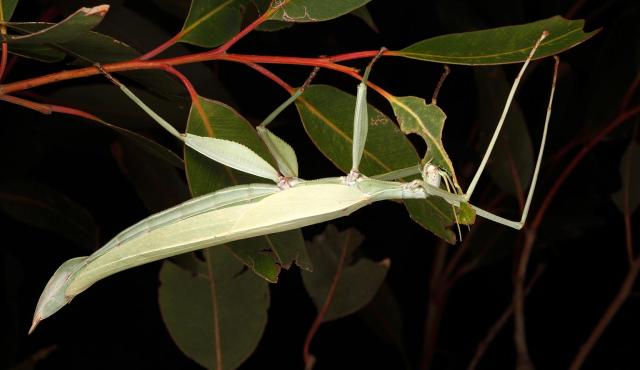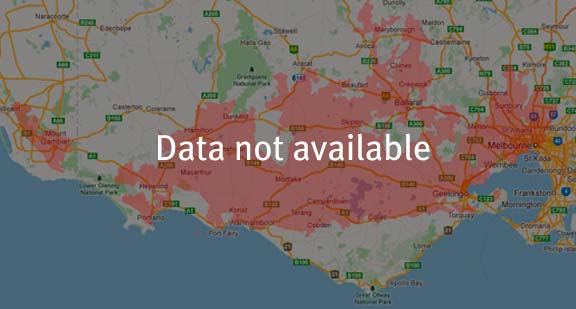A range of teacher professional learning programs will be developed to accompany the Biodiversity of the Western Volcanic Plains online outreach...

Children's Stick Insect
Tropidoderus childrenii
This species exhibits ‘sexual dimorphism’ i.e. a difference in size and shape between males and females. The eggs are long, tan and capsule-like. The young are bright green to whitish-green.
| Details | Description |
| Type | Invertebrate |
| Group | Insect - Stick Insect |
| Identifying Characteristics | |
| Distinctive Markings | Body texture and colour assists the females to look like 'leaves' and males to look like 'sticks'. Abdomen green and yellow, with a purple patch near the hind wing base. |
| Diet | Herbivore. Eats eucalypt leaves. |
| Habitat | Coastal and inland eucalypt forests. |
| Native Status | Native to Australia |
| Taxonomy | |
| Phylum | Arthropoda |
| Class | Insecta |
| Order | Phasmida |
| Family | Phasmatidae |
| Genus | Tropidoderus |
| Species | childrenii |

Distribution maps indicate current and historic locations where species have been sighted.
Source: Atlas of Living Australia
| Conservation Status | |
| DEPI Advisory List | Not listed |
| FFG Act | Not listed |
| EPBC Act | Not listed |
The conservation status of species is listed within Victoria and Australia.
The Department of Environment and Primary Industry (DEPI) Advisory List consists of non-statutory advisory lists of rare or threatened flora and fauna within Victoria.
The Flora and Fauna Guarantee Act 1988 (FFG Act) lists threatened species in Victoria. Under the Act, an Action Statement is produced for each listed species.
The Environment Protection and Biodiversity Conservation Act 1999 (EPBC Act) is the Australian Government’s key piece of environmental legislation, listing nationally threatened native species and ecological communities.



